@geostarters/openvtpk v0.4.1
OpenVTPK
ESRI's Vector Tile Package (VTPK) archive contains vector tiles that follow Mapbox' Vector Tile specification v2.0. In addition all resources to render the tiles are included (i.e. stylesheet, fonts, etc.).
Unfortunately none of the open source vector tile servers is able to process VTPK packages. Most require either an MBTiles container or a GeoPackage.
The aim of OpenVTPK is to extract the tiles from a VTPK and to re-package them into a container that is supported by open source tile servers.
In the first run repackaging from VTPK to MBTiles is supported.
Motivation
Austria's government publishes detailed geospatial data like vector and raster tiles, elevation data etc. at data.gv.at. One can find vector tiles for the region of Austria in order to use them offline. The publishing format ist VTPK.
What to do before running OpenVTPK
VTPK packages are zipped archives. You can unzip them by using your favorite software like 7z. For inexperienced users it may be easyer to add the .zip extension to the .vptk file (so you end up with *.vtpk.zip).
OpenVTPK expects the VTPK package to be unzipped into a folder of your choice. Later on this folder will be referred to as SOURCEFOLDER.
Installation
Please note that you need to install at least NodeJS 10 or newer!
git clone https://github.com/syncpoint/openvtpk.gitIn order to install all NodeJS modules required change into the folder openvtpk and run
npm installOpenVTPK ist using Heroku's Open CLI FRamework (OCLIF) in order to provide a professional user experience. After installing OpenVTPK you may run bin/run to get information about the commands available.
The screenshot below shows all steps required to install and verify OpenVTPK.
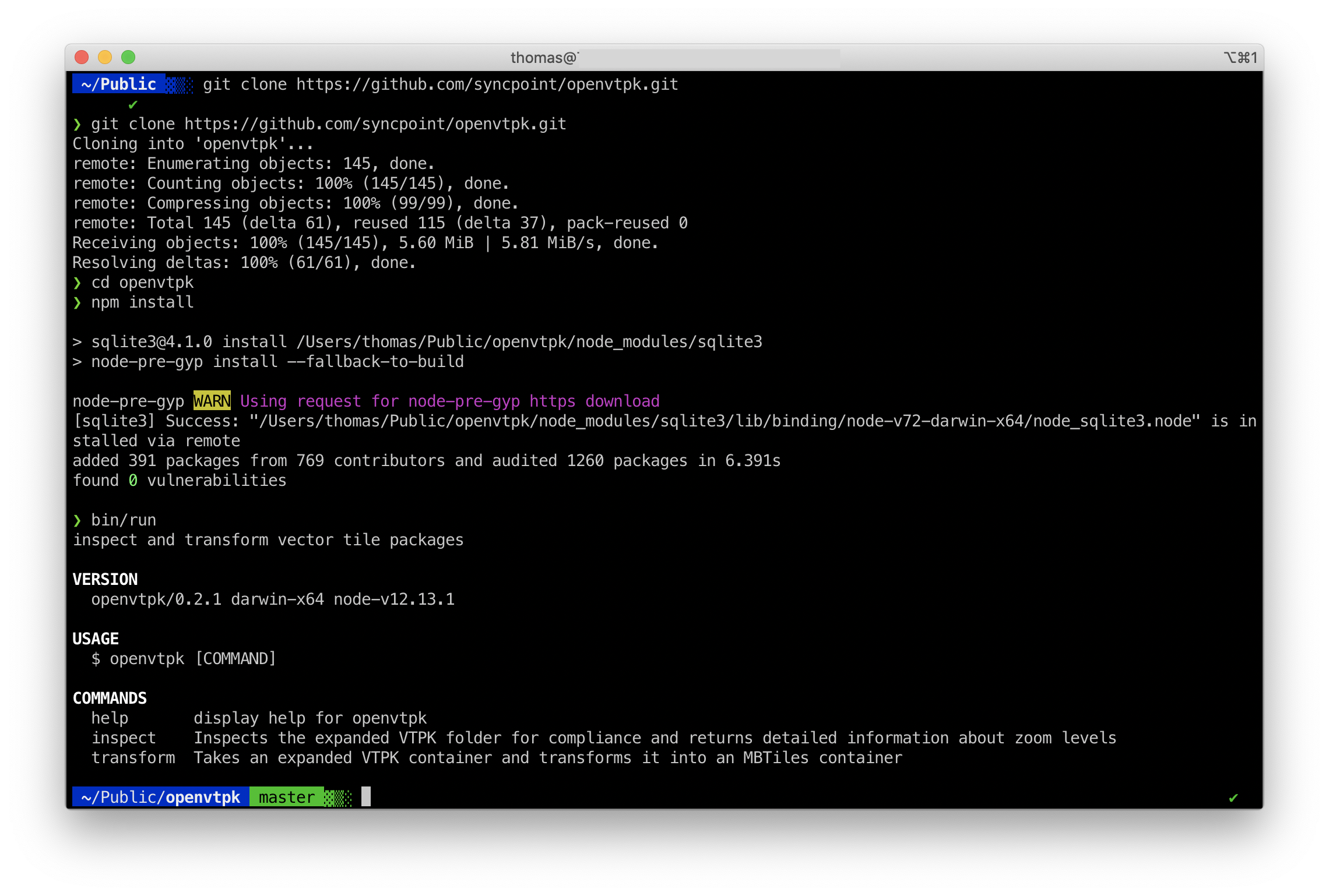
Inspecting an VTPK archive
OpenVTPK is able to inspect an VTPK archive. So one can decide which zoom level to transform.
bin/run inspect SOURCEFOLDERSee the screenshot below as an example for Austria's basemap.at offline vector tiles.
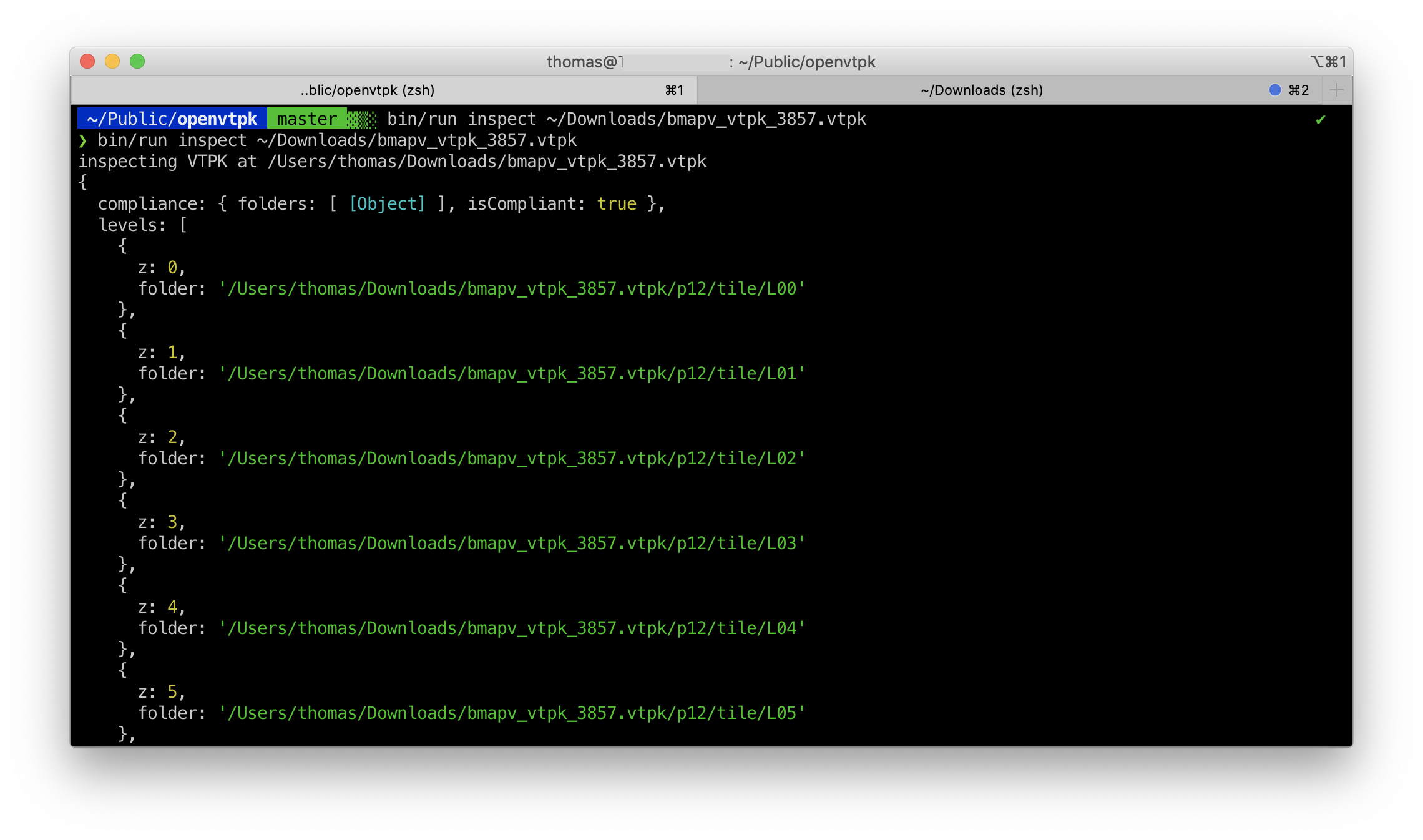
Running a transformation
If your expanded VTPK container is located in SOURCEFOLDER run the following in order to repackage the tiles to an MBTiles container. You may limit the zoom levels by providing the optional -l=minZoomLevel...maxZoomLevel parameter.
bin/run transform SOURCEFOLDER [-l=min..max]I.e. to process the levels 7 to 11 use -l=7..11.
If you use -l=..6 the levels 0 to 6 wil be processed.
By setting the flag to -l=14.. all levels from (including) 14 up to
the maximum level available will be processed.
The default value for this flag is -l=0...
The screenshot below shows the transformation for the zoom levels 0 to 3. The resulting MBTiles files can be found in the root folder of OpenVTPK.
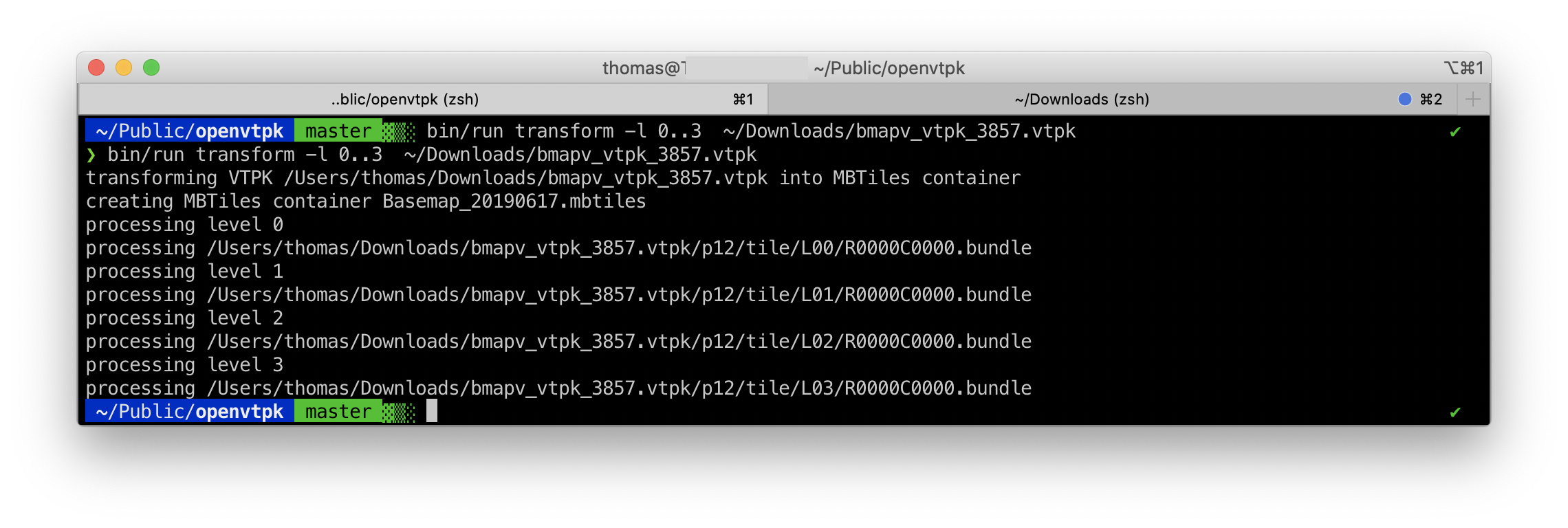
What you get
OpenVTPK will
- create an MBTiles container named after the data in the
root.jsonfile - extract the vector tiles from the VTPK folder
- extract the layer names
- write the tiles to the MBTiles container
- write metadata (including the layer names extracted previously) to the MBTiles container
Depending on the size of your VTPK and the levels to extract running OpenVTPK will take a few minutes.
If you run OpenVTPK multiple times please make sure to remove the existing MBtiles file.
How to view the tiles
Please use your favorite tile server to view the basemap.at tiles offline.
@mapbox/mbview
An easy-to-use option may be @mapbox/mbview. Just clone the repository and start the tile server
node ./cli.js PATH_TO_YOUR/basemap.at.mbtilesOpen your browser and be a little patient:
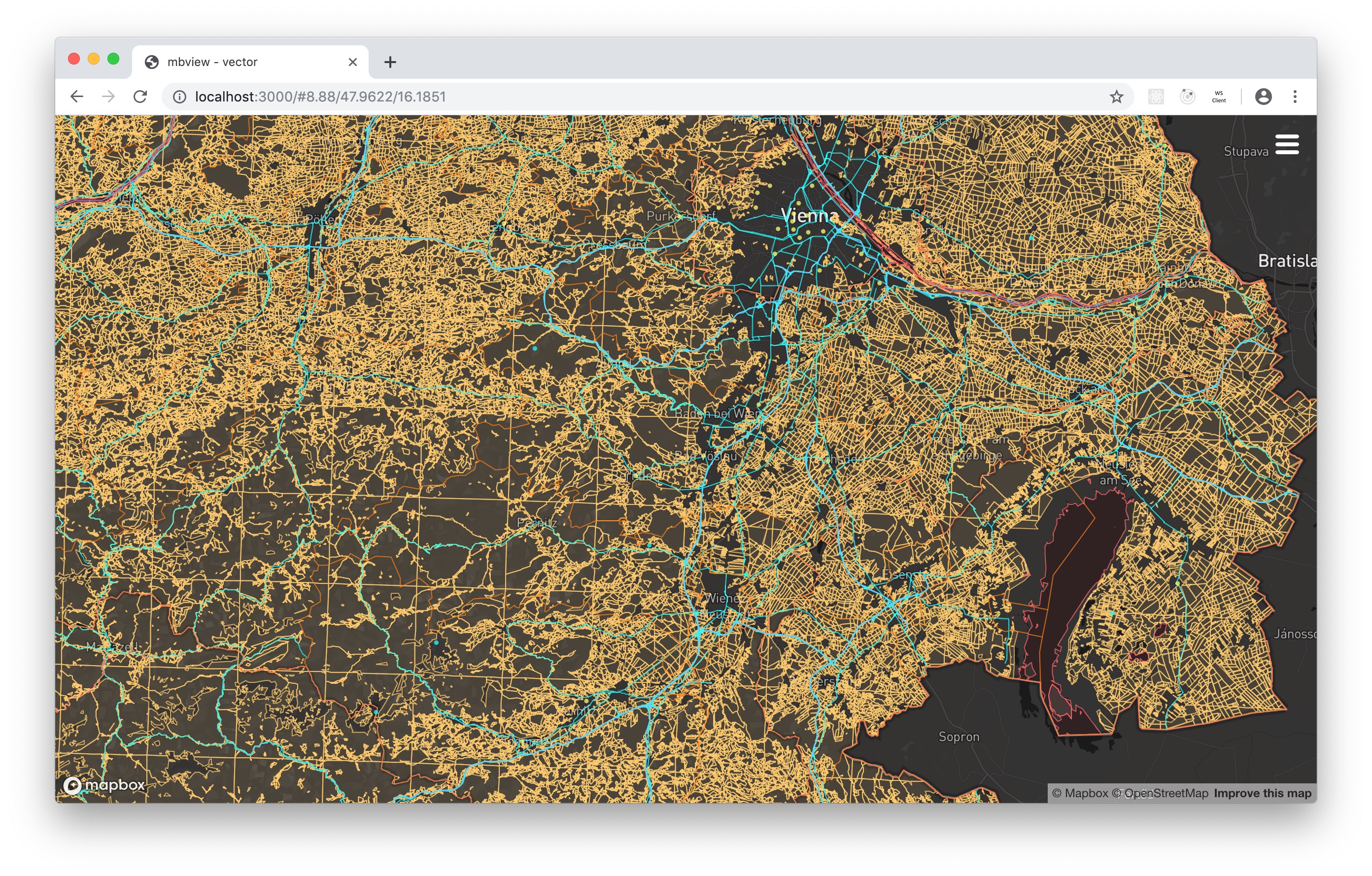
klokantech/tileserver-gl (Docker)
If you prefer using a docker container tileserver-gl can be a good start. Run the following command to start the container within the folder where you stored the mbtiles file:
docker run --rm -it -v $(pwd):/data -p 8080:80 klokantech/tileserver-glOpen your browser and visit http://localhost:8080:
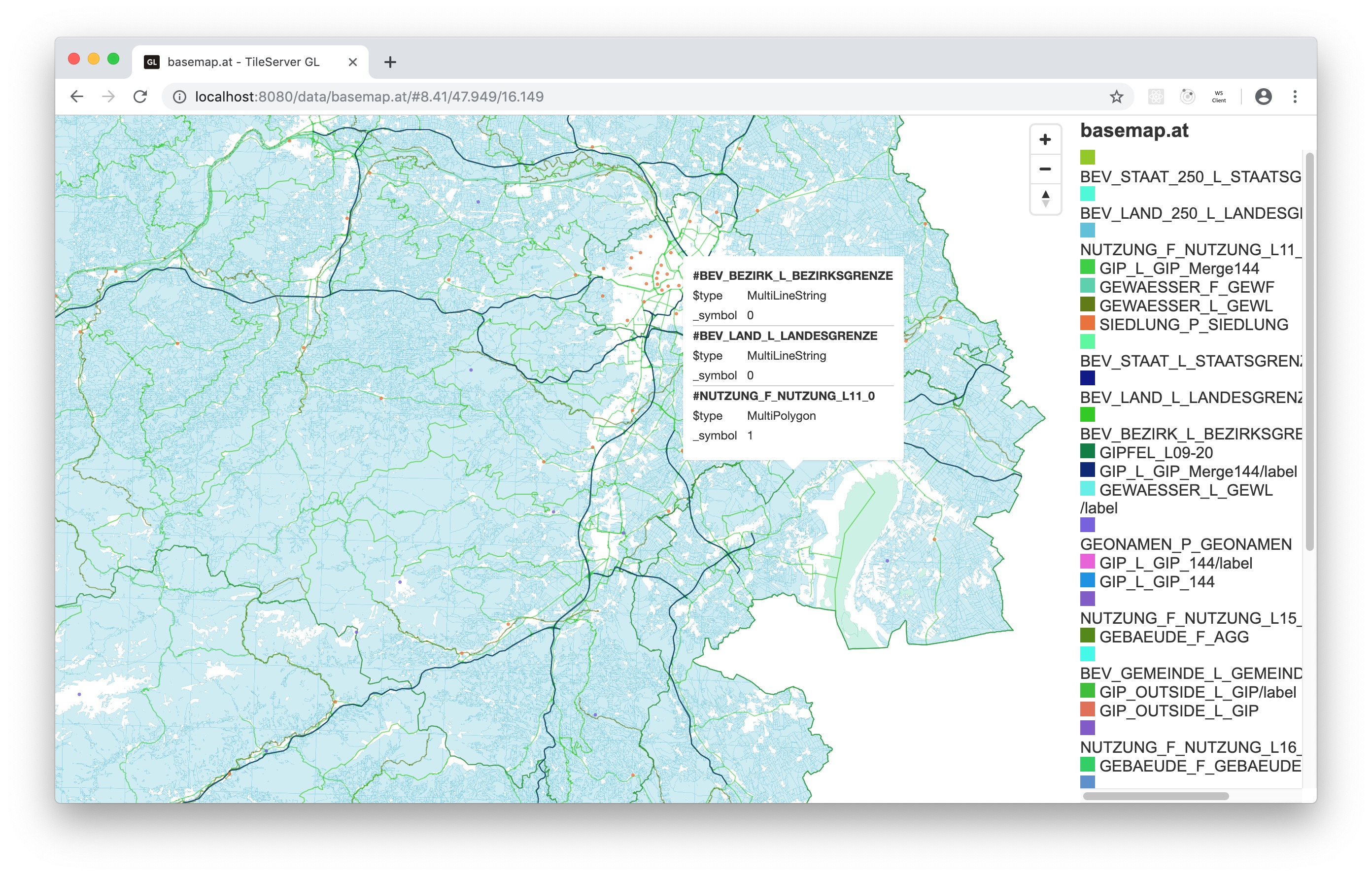
How to style the maps
The provided VTPK container also includes all resources required to style the vector tiles:
- fonts
- sprites
- styles
For a detailed how-to please read our example for basemap.at
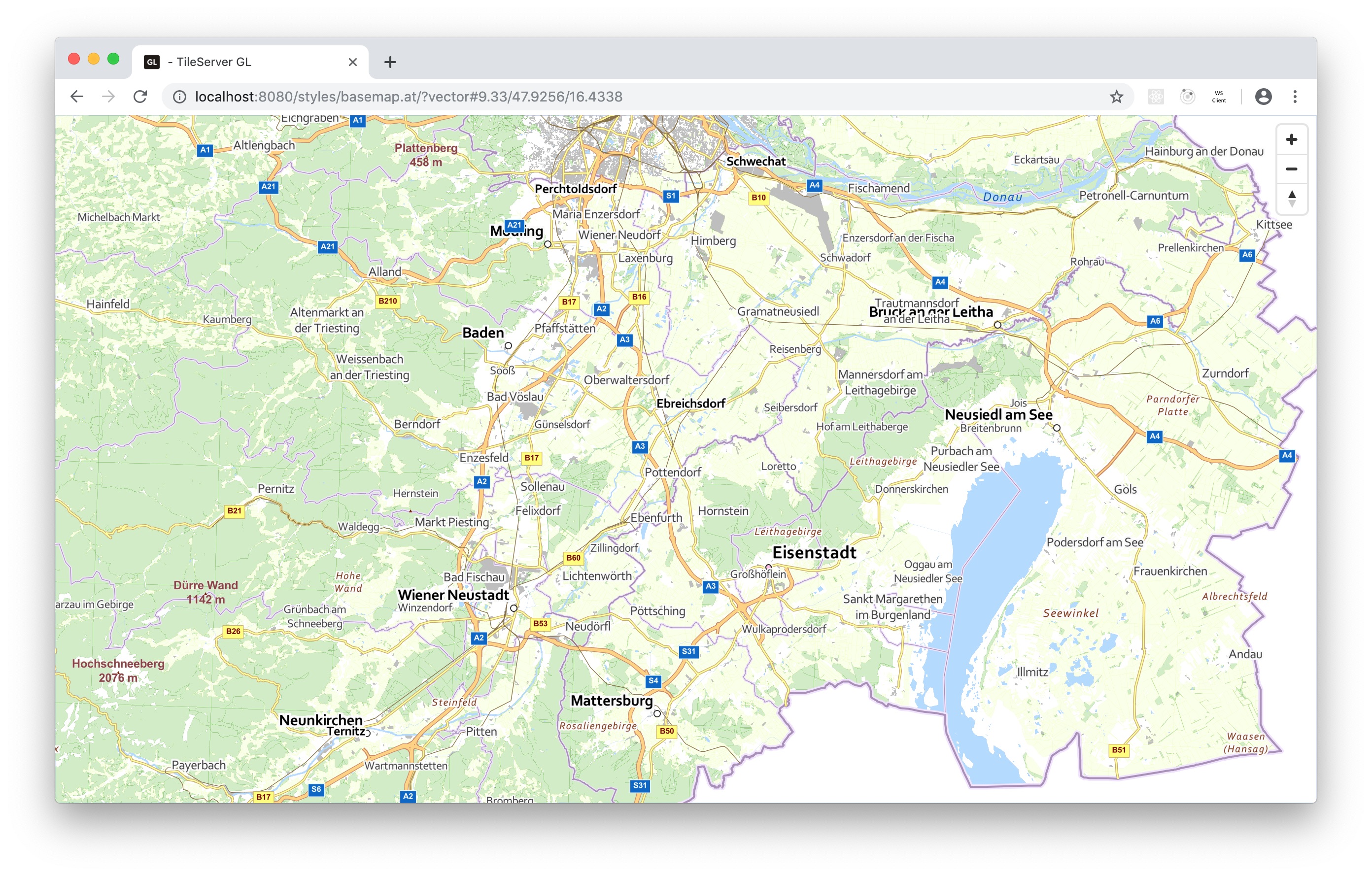
5 years ago